RECENTERING PSYCH STATS
My (this is Lynette Bikos) participation in the Academics for Black Survival and Wellness initiative served as a clarion call for addressing systematic racism in the academy. Throughout the initiative, A4FL presenters described the problem of centering whiteness.
To center a variable in regression means to set its value at zero and interpret all other values in relation to this reference point. Regarding race and gender, researchers often center male and White at zero. Further, it is typical that research vignettes in statistics textbooks are similarly seated in a White, Western (frequently U.S.), heteronormative, framework.
Pairing the statistical notion of centering with the challenge to decenter whiteness caused me to (a) immediately change how I teach statistics, (b) formally evaluate the changes that I made, and (c) begin the steps in creating an open education resource (OER).
Teaching and Evaluating a ReCentered Stats Class
I teach four “stats n’ methods” classes in the Clinical and Industrial/Organizational Psychology doctoral programs. These include:
- Research Methods I: Analysis of Variance
- Research Methods III: Multivariate Modeling
- Research Methods IV: Psychometrics and Theory of Test Construction
- Qualitative Research Methods (only I/O students are required to take this course)
Expecting that we will make mistakes and continue to learn, recentering the stats classes to this point have involved:
- Creating a classroom climate that makes space for all bodies and voices
- Naming and addressing practices that perpetuate institutional racism in both the university and larger profession of psychology
- Reducing the costs by
- using freely available OERS or through the campus library and
- teaching with R (and other freely available apps) so that post-doctorally, students will be equipped to continue as scientist-practitioners-advocates (the transition from SPSS to R began in 2017)
- Incorporating principles of universal design, such as
- including captioning with screencasted lectures that are viewed prior to classtime
- adhering to principles of text formatting that work best with screenreaders
- Selecting research vignettes from the published literature where
- the author’s identity is from a group where scholarship is historically marginalized (e.g., BIPOC, LGBTQ+, emerging nations),
- the research has a focus on justice, equity, diversity, inclusion, and contributes to a social justice pedagogy,
- the lesson’s statistic is used in the article, and
- the data is shared publicly or there is sufficient information in the article to simulate the data for the chapter examples) and practice problem(s)
- Modeling and incentivizing participation in open science through pre-registration, data/code sharing, and learning to collaborate in cloud-environments (e.g., SharePoint, GitHub, OSF)
At the end of Fall Quarter 2020, I added three additional items were added to the institution’s course evaluations for the students enrolled in the fall quarter stats courses. So that we could analyze the effects across time, all students who were enrolled in the doctoral programs were sent information about a proposed mixed methods evaluation of the decolonization efforts and given an opportunity to “opt out” of having their de-identified course evaluation data used in the evaluation. Analysis is presently underway. Consensual qualitative research - modified (Spangler et al., 2012) is being used to analyze the short, narrative responses to the questions about decolonization. Heirarchical linear regression is being used to evaluate the incremental effects of the student’s department (clinical vs. I/O), the statistics package being taught (SPSS vs. R), and the intentional approaches to decolonizing the curriculum (precentered vs. recentered).
ReCentering Psych Stats: the OER (textbook)
The experience of locating freely available materials for teaching the statistics class made clear the need for resources that are recentered (as described above), but are also written for the scientist-practitioner-advocate in that they:
- use R
- provide a workflow through the statistic
- identify common problems (e.g., missingness) and demonstrate approaches to address them
- are connected to published works so that the student can see how the statistic that is the focus of the lesson fits into the larger analytic picture
- demonstrate how to write up the results in APA style
At this stage, I have created first drafts of four mini-volumes of lessons used in my doctoral level statistics courses (copyediting is still required). These include:
- Analysis of
Variance with chapters on
- Orientation to R (two chapters)
- One-way ANOVA
- Factorial (between-subjects) ANOVA
- One-way repeated measures ANOVA
- Mixed design ANOVA
- Analysis of covariance (ANCOVA)
- Multivariate
Modeling with chapters on
- Cleaning and formatting data
- Scoring data
- Data diagnostics
- Multiple imputation
- Simple mediation
- Complex (parallel, serial) mediation
- Simple moderation
- Conditional process analysis (moderated mediation)
- Multilevel
Modeling with chapters on
- Nested within groups (including using compositional effects as an approach to analysis)
- Preparing data for nesting within persons (repeated measures)
- Longitudinal modeling
- Considerations for clocking time
- Psychometrics
with chapters on
- Questionnaire construction
- Survey development in Qualtrics
- Validity
- Reliability
- Item analysis for educational achievement exams
- Item analysis for Likert type scales
- Principal components Analysis
- Principal axis Factoring
- Confirmatory factor analysis: First order models
- Confirmatory factor analysis: Hierarchical and nested models
- extRas is emerging,
presenting offering chapters on
- The process of building a book with R Markdown, bookdown, GitHub, and GitHub pages
- The “go-to” formatting techniques used to create ReCentering Psych Stats
To challenge my R skills, I am writing the textbook (and this website) in RMarkdown (with the bookdown package), serving it to the Github, and posting it through Github Pages.
Collaboration is welcome! This could include:
- reviewing/editing chapters via the Github repository,
- recommending articles as research vignettes,
- collaborating on a lesson if you are co-author to a chapter that is included in the OER.
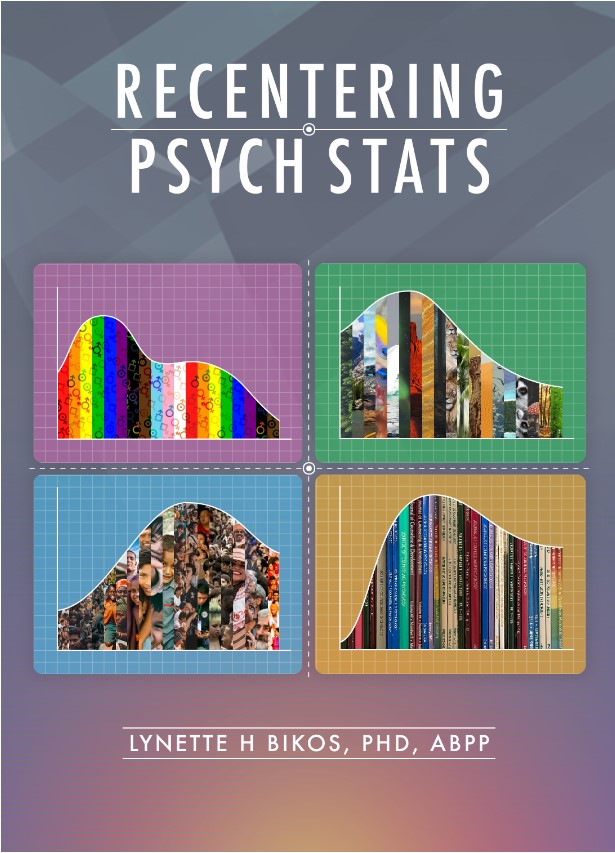
Image of a the ReCentering Psych Stats cover. The image includes four non-normal distributions representing gender diversity, race/ethnicity, sustainability, and peer-reviewed journals..
Recent Presentations
- At WPA 2021(Virtual) we provided a symposium presentaiton (only 16 minutes) summarizing the quantitative and qualitative evaluation of the first attempt at recentering ANOVA and psychometrics courses.
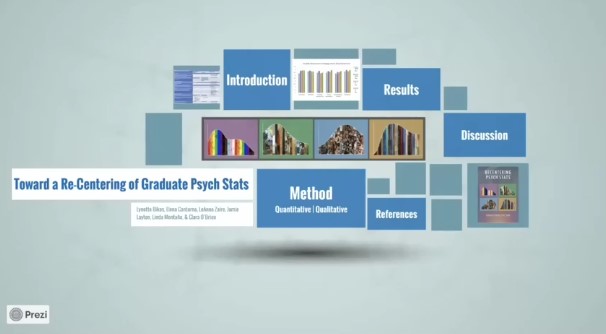
Image of the title slide for a symposium presentation presenting the ReCentering Psych Stats.
s

A image of Dr. Bikos and Desta
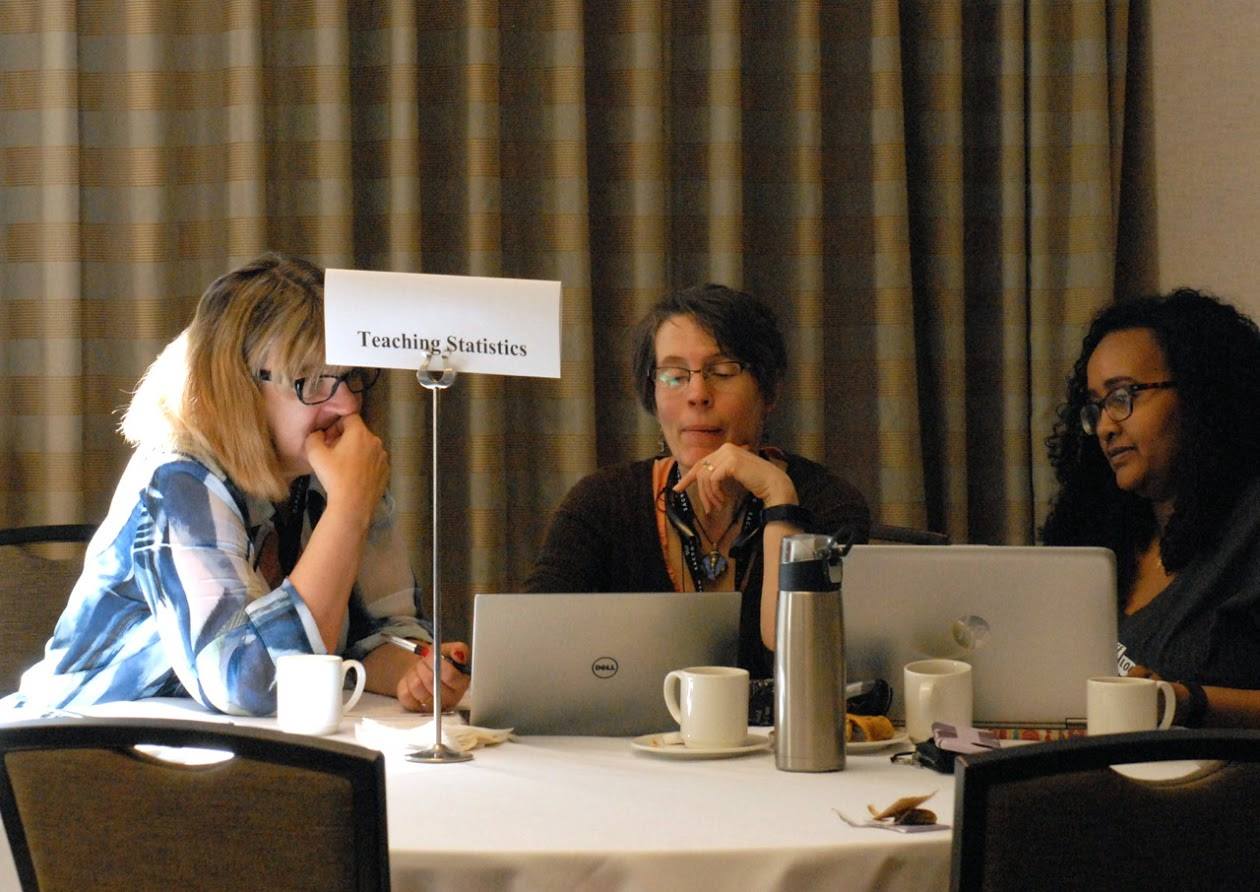
working with Dr. Ullman
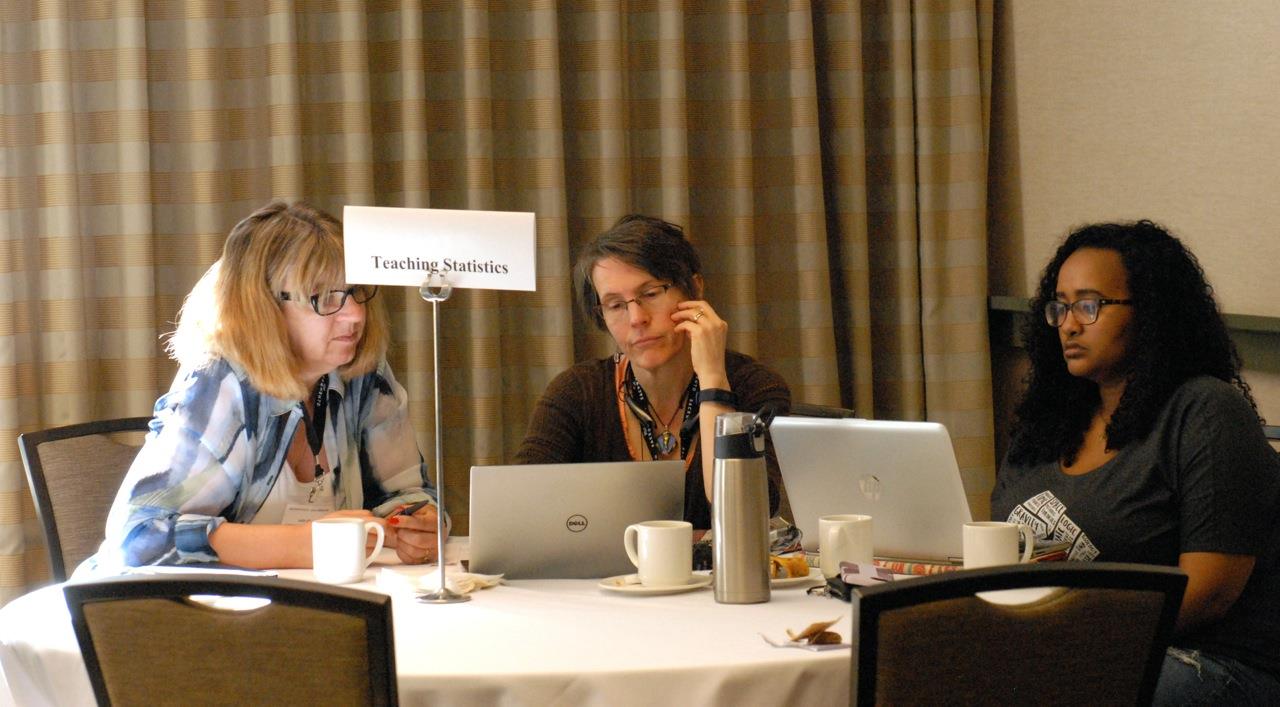
to solve an HLM statistics dilemma.
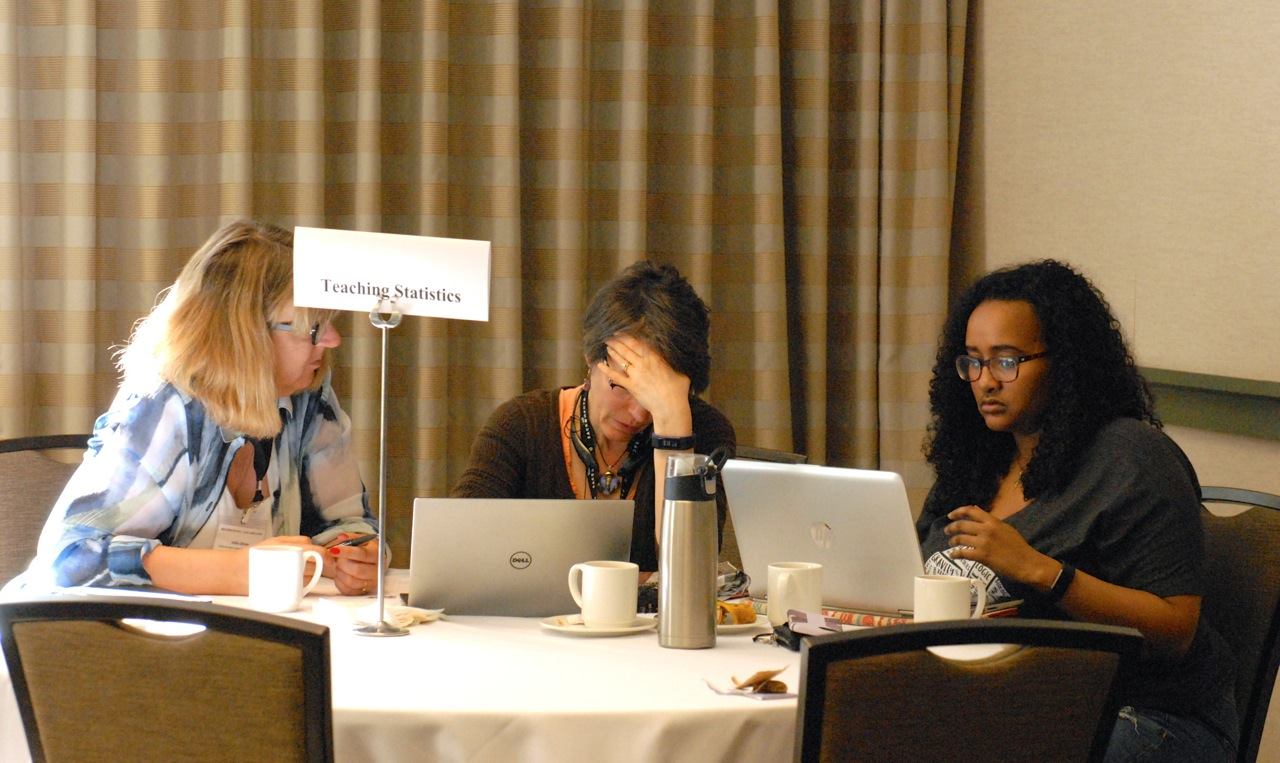
It was complicated.